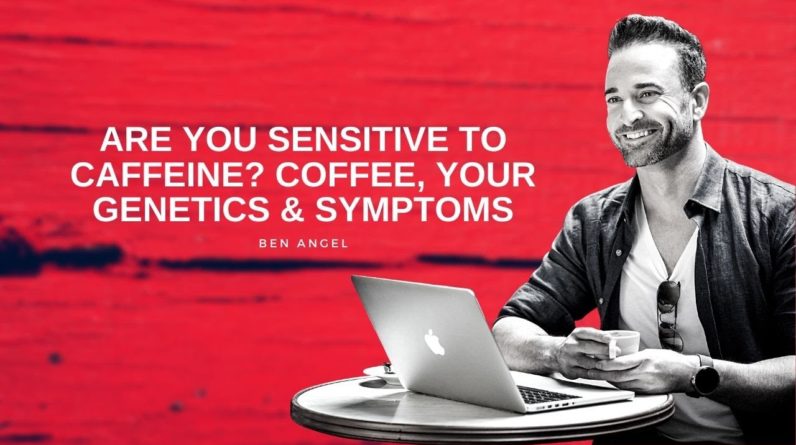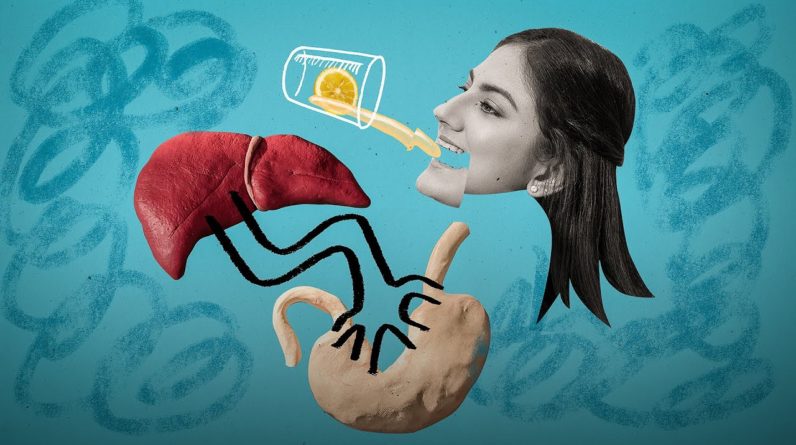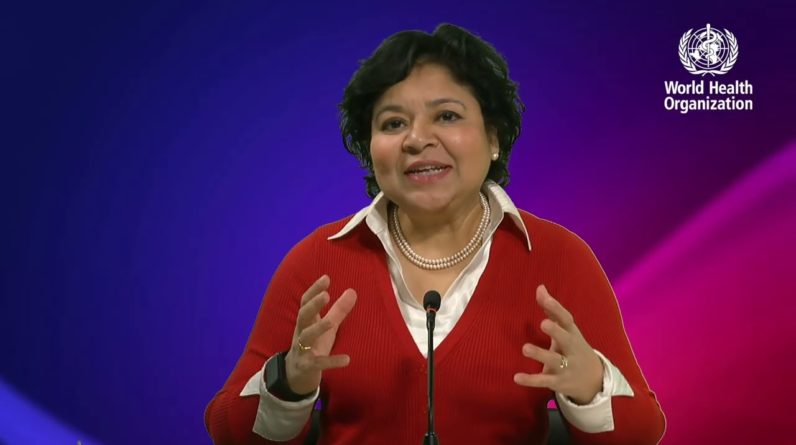
In the mid-'90s, the CDC and Kaiser Permanente discovered an exposure
that dramatically increased the risk for seven out of 10 of the leading
causes of death in the United States. In high doses, it affects
brain development, the immune system, hormonal systems, and even the way our DNA
is read and transcribed. Folks who are exposed in very high doses have triple the lifetime risk
of heart disease and lung cancer and a 20-year difference
in life expectancy. And yet, doctors today are not trained
in routine screening or treatment. Now, the exposure I'm talking about is
not a pesticide or a packaging chemical. It's childhood trauma. Okay. What kind of trauma
am I talking about here? I'm not talking about failing a test
or losing a basketball game. I am talking about threats
that are so severe or pervasive that they literally get under our skin
and change our physiology: things like abuse or neglect, or growing up with a parent
who struggles with mental illness or substance dependence.
Now, for a long time, I viewed these things in the way
I was trained to view them, either as a social problem —
refer to social services — or as a mental health problem —
refer to mental health services. And then something happened
to make me rethink my entire approach. When I finished my residency, I wanted to go someplace
where I felt really needed, someplace where I could make a difference. So I came to work for
California Pacific Medical Center, one of the best private hospitals
in Northern California, and together, we opened a clinic
in Bayview-Hunters Point, one of the poorest, most underserved
neighborhoods in San Francisco.
Now, prior to that point, there had been only
one pediatrician in all of Bayview to serve more than 10,000 children, so we hung a shingle, and we were able
to provide top-quality care regardless of ability to pay. It was so cool. We targeted
the typical health disparities: access to care, immunization rates,
asthma hospitalization rates, and we hit all of our numbers. We felt very proud of ourselves. But then I started noticing
a disturbing trend. A lot of kids were being
referred to me for ADHD, or Attention Deficit
Hyperactivity Disorder, but when I actually did
a thorough history and physical, what I found was that
for most of my patients, I couldn't make a diagnosis of ADHD. Most of the kids I was seeing
had experienced such severe trauma that it felt like something else
was going on.
Somehow I was missing something important. Now, before I did my residency,
I did a master's degree in public health, and one of the things that they teach you
in public health school is that if you're a doctor and you see 100 kids
that all drink from the same well, and 98 of them develop diarrhea, you can go ahead
and write that prescription for dose after dose
after dose of antibiotics, or you can walk over and say,
"What the hell is in this well?" So I began reading everything that
I could get my hands on about how exposure to adversity affects the developing brains
and bodies of children.
And then one day,
my colleague walked into my office, and he said, "Dr. Burke,
have you seen this?" In his hand was a copy
of a research study called the Adverse Childhood
Experiences Study. That day changed my clinical practice
and ultimately my career. The Adverse Childhood Experiences Study is something that everybody
needs to know about. It was done by Dr. Vince Felitti at Kaiser
and Dr. Bob Anda at the CDC, and together, they asked 17,500 adults
about their history of exposure to what they called "adverse
childhood experiences," or ACEs. Those include physical, emotional,
or sexual abuse; physical or emotional neglect; parental mental illness,
substance dependence, incarceration; parental separation or divorce; or domestic violence. For every yes, you would get
a point on your ACE score. And then what they did was they correlated these ACE scores
against health outcomes. What they found was striking. Two things: Number one, ACEs are incredibly common. Sixty-seven percent of the population
had at least one ACE, and 12.6 percent, one in eight,
had four or more ACEs.
The second thing that they found was that there was
a dose-response relationship between ACEs and health outcomes: the higher your ACE score,
the worse your health outcomes. For a person with an ACE score
of four or more, their relative risk of chronic
obstructive pulmonary disease was two and a half times that
of someone with an ACE score of zero. For hepatitis, it was also
two and a half times. For depression, it was
four and a half times. For suicidality, it was 12 times. A person with an ACE score
of seven or more had triple the lifetime risk
of lung cancer and three and a half times the risk
of ischemic heart disease, the number one killer
in the United States of America. Well, of course this makes sense. Some people looked at this data
and they said, "Come on. You have a rough childhood,
you're more likely to drink and smoke and do all these things
that are going to ruin your health.
This isn't science.
This is just bad behavior." It turns out this is exactly
where the science comes in. We now understand
better than we ever have before how exposure to early adversity affects the developing brains
and bodies of children. It affects areas like
the nucleus accumbens, the pleasure and reward
center of the brain that is implicated
in substance dependence. It inhibits the prefrontal cortex, which is necessary for impulse control
and executive function, a critical area for learning. And on MRI scans, we see measurable differences
in the amygdala, the brain's fear response center. So there are real neurologic reasons why folks exposed
to high doses of adversity are more likely to engage
in high-risk behavior, and that's important to know. But it turns out that even if you don't
engage in any high-risk behavior, you're still more likely
to develop heart disease or cancer. The reason for this has to do with
the hypothalamic–pituitary–adrenal axis, the brain's and body's
stress response system that governs our fight-or-flight response. How does it work? Well, imagine you're walking
in the forest and you see a bear.
Immediately, your hypothalamus
sends a signal to your pituitary, which sends a signal
to your adrenal gland that says, "Release stress hormones!
Adrenaline! Cortisol!" And so your heart starts to pound, Your pupils dilate, your airways open up, and you are ready to either
fight that bear or run from the bear. And that is wonderful if you're in a forest
and there's a bear. (Laughter) But the problem is what happens
when the bear comes home every night, and this system is activated
over and over and over again, and it goes from being
adaptive, or life-saving, to maladaptive, or health-damaging. Children are especially sensitive
to this repeated stress activation, because their brains and bodies
are just developing. High doses of adversity not only affect
brain structure and function, they affect the developing immune system, developing hormonal systems, and even the way our DNA
is read and transcribed.
So for me, this information
threw my old training out the window, because when we understand
the mechanism of a disease, when we know not only
which pathways are disrupted, but how, then as doctors, it is our job
to use this science for prevention and treatment. That's what we do. So in San Francisco, we created
the Center for Youth Wellness to prevent, screen and heal the impacts
of ACEs and toxic stress. We started simply with routine screening
of every one of our kids at their regular physical, because I know that if my patient
has an ACE score of 4, she's two and a half times as likely
to develop hepatitis or COPD, she's four and half times as likely
to become depressed, and she's 12 times as likely
to attempt to take her own life as my patient with zero ACEs.
I know that when she's in my exam room. For our patients who do screen positive, we have a multidisciplinary treatment team
that works to reduce the dose of adversity and treat symptoms using best practices,
including home visits, care coordination, mental health care, nutrition, holistic interventions, and yes,
medication when necessary. But we also educate parents
about the impacts of ACEs and toxic stress the same way you would for covering
electrical outlets, or lead poisoning, and we tailor the care
of our asthmatics and our diabetics in a way that recognizes that they may
need more aggressive treatment, given the changes to their hormonal
and immune systems. So the other thing that happens
when you understand this science is that you want to shout it
from the rooftops, because this isn't just an issue
for kids in Bayview. I figured the minute
that everybody else heard about this, it would be routine screening,
multi-disciplinary treatment teams, and it would be a race to the most
effective clinical treatment protocols.
Yeah. That did not happen. And that was a huge learning for me. What I had thought of as simply
best clinical practice I now understand to be a movement. In the words of Dr. Robert Block, the former President
of the American Academy of Pediatrics, "Adverse childhood experiences are the single greatest
unaddressed public health threat facing our nation today." And for a lot of people,
that's a terrifying prospect. The scope and scale of the problem
seems so large that it feels overwhelming to think about how we might approach it. But for me, that's actually
where the hopes lies, because when we have the right framework, when we recognize this to be
a public health crisis, then we can begin to use the right
tool kit to come up with solutions. From tobacco to lead poisoning
to HIV/AIDS, the United States actually has
quite a strong track record with addressing public health problems, but replicating those successes
with ACEs and toxic stress is going to take determination
and commitment, and when I look at what
our nation's response has been so far, I wonder, why haven't we taken this more seriously? You know, at first I thought
that we marginalized the issue because it doesn't apply to us.
That's an issue for those kids
in those neighborhoods. Which is weird, because the data
doesn't bear that out. The original ACEs study
was done in a population that was 70 percent Caucasian, 70 percent college-educated. But then, the more I talked to folks, I'm beginning to think that maybe
I had it completely backwards. If I were to ask
how many people in this room grew up with a family member
who suffered from mental illness, I bet a few hands would go up. And then if I were to ask how many folks
had a parent who maybe drank too much, or who really believed that
if you spare the rod, you spoil the child, I bet a few more hands would go up. Even in this room, this is an issue
that touches many of us, and I am beginning to believe
that we marginalize the issue because it does apply to us. Maybe it's easier to see
in other zip codes because we don't want to look at it.
We'd rather be sick. Fortunately, scientific advances
and, frankly, economic realities make that option less viable every day. The science is clear: Early adversity dramatically affects
health across a lifetime. Today, we are beginning to understand
how to interrupt the progression from early adversity
to disease and early death, and 30 years from now, the child who has a high ACE score and whose behavioral symptoms
go unrecognized, whose asthma management
is not connected, and who goes on to develop
high blood pressure and early heart disease or cancer will be just as anomalous
as a six-month mortality from HIV/AIDS. People will look at that situation
and say, "What the heck happened there?" This is treatable. This is beatable. The single most important thing
that we need today is the courage to look
this problem in the face and say, this is real
and this is all of us.
I believe that we are the movement. Thank you. (Applause).







